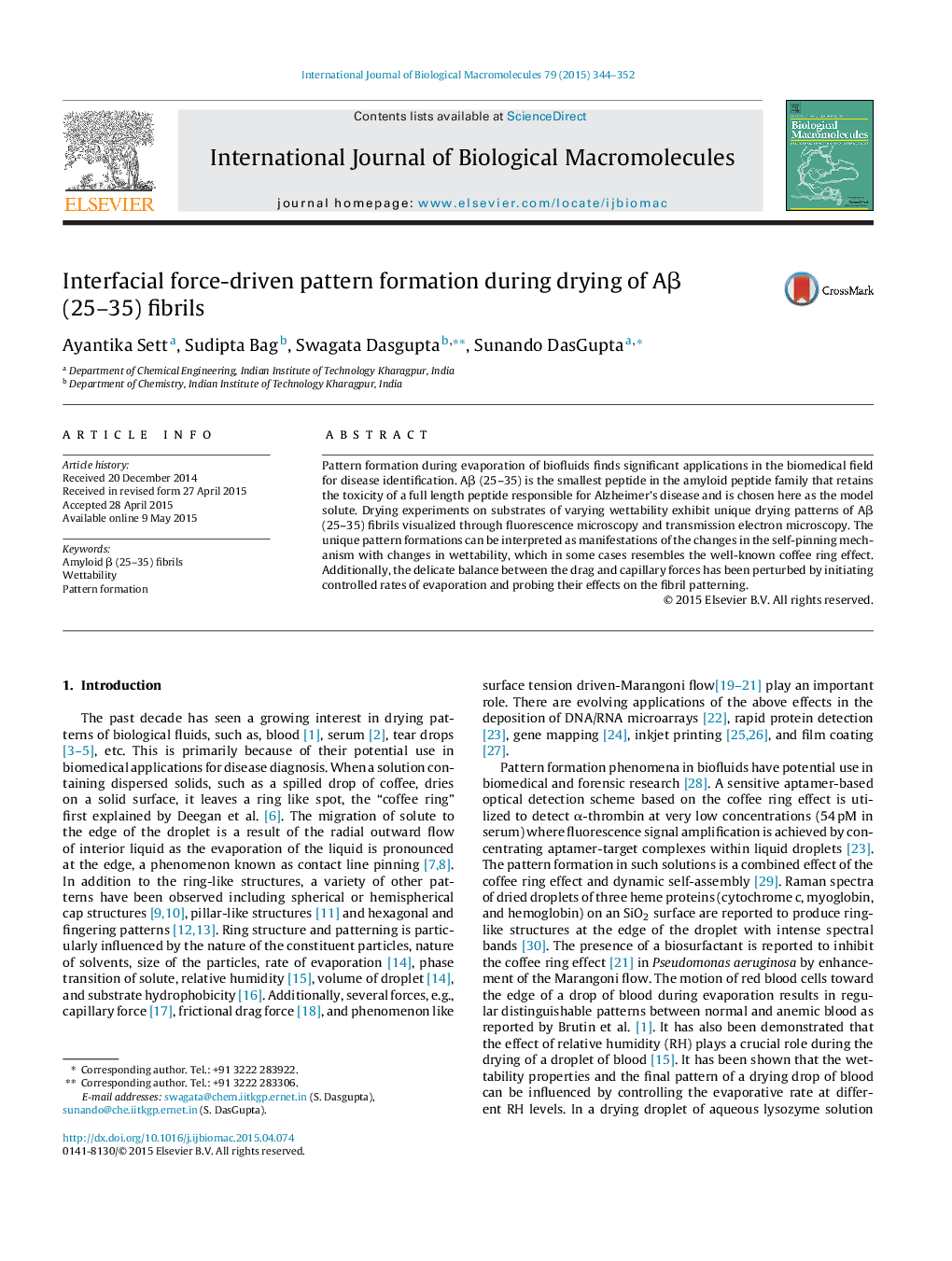| Article ID | Journal | Published Year | Pages | File Type |
|---|---|---|---|---|
| 8331088 | International Journal of Biological Macromolecules | 2015 | 9 Pages |
Abstract
Pattern formation during evaporation of biofluids finds significant applications in the biomedical field for disease identification. Aβ (25-35) is the smallest peptide in the amyloid peptide family that retains the toxicity of a full length peptide responsible for Alzheimer's disease and is chosen here as the model solute. Drying experiments on substrates of varying wettability exhibit unique drying patterns of Aβ (25-35) fibrils visualized through fluorescence microscopy and transmission electron microscopy. The unique pattern formations can be interpreted as manifestations of the changes in the self-pinning mechanism with changes in wettability, which in some cases resembles the well-known coffee ring effect. Additionally, the delicate balance between the drag and capillary forces has been perturbed by initiating controlled rates of evaporation and probing their effects on the fibril patterning.
Keywords
Related Topics
Life Sciences
Biochemistry, Genetics and Molecular Biology
Biochemistry
Authors
Ayantika Sett, Sudipta Bag, Swagata Dasgupta, Sunando DasGupta,
